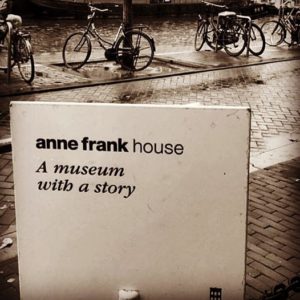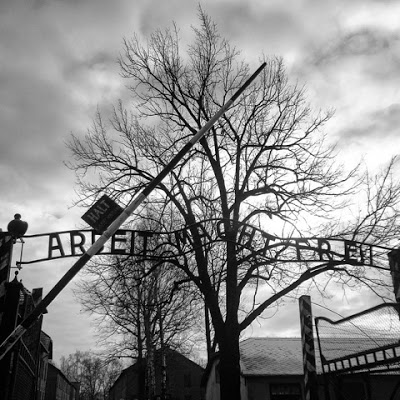
When I found out that there were direct flights to Beijing from Europe, my immediate thought was to visit a city I had never been before. But the cheapest flights I could find were from Helsinki, Warsaw, and Copenhagen (all cities I have already visited). That’s how a new idea emerged: I’ve always wanted to see Auschwitz and last time I went to Warsaw, almost eight years ago, I promised myself I would go back to Poland just to see the concentration camp.
And when my sister wanted to spend her Carnival break in Amsterdam, we decided to put two and two together and visit Anne Frank’s House —» Concentration Camp.
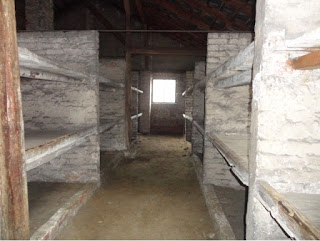
The first thing I thought when I got to the camp was: “I’m wearing a jumper and a shirt, two jackets, a beanie and a scarf, and Timberland boots and I’m freezing. How did those people survive with just stripped pyjamas?” While we were walking to the entrance it started snowing. The blood I my veins seemed so tick and soon enough the places where the flow was slower were beginning to burn. It didn’t take long till the simple act of taking my gloveless hands out of my pockets to take pictures was restrained to what was absolutely necessary.
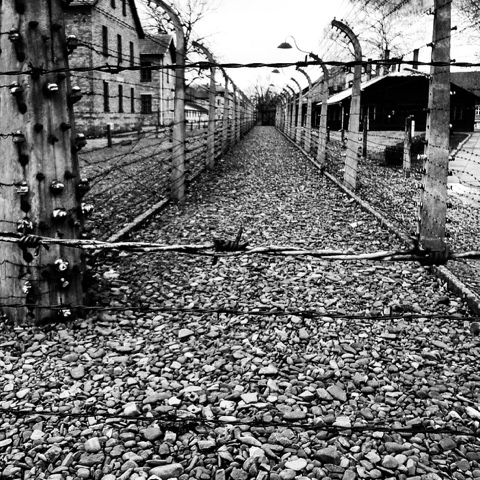
Auschwitz I is divided in blocks, and some of these blocks are open for exhibitions about the life in the concentration camps. The story in some of the signs are atrocious: “the bodies of the prisoners trying to flee were displaced here as a warning”, “here is a site of mass murder, please keep silent to show respect”, among others…
But those are not the stories that make my throat throb and force me to swallow hard, the solidarity stories do. The one that tells the story of a mother separated from her daughter who later, after the camps’ release, was reunited with her, due to the kindness of strangers that took care of the little girl and protected her. The stories of surviving children in Auschwitz telling how adults made them toys out of rags, stones and wood. The story of a priest who volunteered to die in the starvation cells to save a family man. The horrors that those people were subjected to do not surprise me, but seeing that protective instinct that characterises our species does. Seeing that there were people that never abandoned hope, kindness, and solidarity while suffering cruel acts? Those are the times I discover the true meaning of “humanity”.
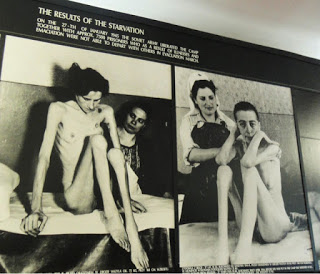
The museum was full despite the cold and the occasional snow. Some people carried bouquets of flowers, perhaps people that empathised with what had happened or relatives of someone who had been forced to live there. But those people, with those flowers serve as reminders that these stories aren’t made up, that what happened there doesn’t come from a horror book. Those were real human beings with real families. How did things like fear, hate, thirst for power and abstinence allowed for such stories to become a reality?
The museum is not harshly severe for the faint of heart that might believe they could never visit it. We see more gruesome things on television on our daily lives. But there are some things less merciful. Rooms showing from one end to the other the two tons of women hair that were retrieved from sacks the Germans intended to sell as textile.Thousands and thousands of dusted and ratty shoes, taken from the people on their arrival when they were delivered wooden clogs. In the middle of so many shoes it is almost a miracle when you find one with a pair.
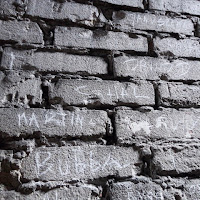 When we visited the gas chamber in Auschwitz I was waiting to feel that distinguished smell of burnt that so many people talk about when visiting the camp but it didn’t happen. It was only after we caught the free shuttle that takes us to Birkenau (Auschwitz II) that such smell became present. Dozens (maybe hundreds) of crematoriums are displaced in one side of the camp, broken and burnt. On the other side are the prisoners’ barracks, where they were force to sleep in three levelled bunks, squeezing against one another because of the lack of space. Some even wrote their names on the walls, afraid that someone will forget they were there, afraid that history will mark them as just another number that died in the holocaust.
When we visited the gas chamber in Auschwitz I was waiting to feel that distinguished smell of burnt that so many people talk about when visiting the camp but it didn’t happen. It was only after we caught the free shuttle that takes us to Birkenau (Auschwitz II) that such smell became present. Dozens (maybe hundreds) of crematoriums are displaced in one side of the camp, broken and burnt. On the other side are the prisoners’ barracks, where they were force to sleep in three levelled bunks, squeezing against one another because of the lack of space. Some even wrote their names on the walls, afraid that someone will forget they were there, afraid that history will mark them as just another number that died in the holocaust.
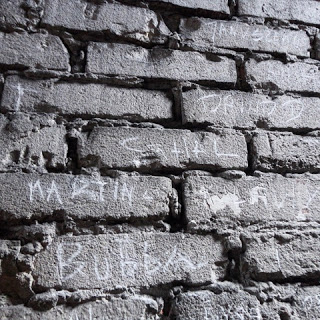
For those who wish to know: from Warsaw’s train station (Warszawa Centralna) there are direct trains to Krakow (Kraków Glowny). The price ranges from 60-200 zloty (15-50 euros), depending on days and time (my advice is to go to the information centre and ask which one is the cheapest train). The journey takes 3 hours.
When in Krakow it is possible to stay in a hostel for one or two nights. Krakow is a beautiful city and there are some Free Walking Tours that tell the story of the city and guide you through the most important monuments (this works especially well if you’re anything like me and suck with directions and are constantly getting lost with maps).
It is possible to catch the train to go to Auschwitz (the stop is 2km away from the museum and they are less frequent than buses). My advice is to take the bus (the bus station is in the same shopping centre as the train station). The tickets are more or less 12-14 zloty (+/- 3 euros) and the buses stop in the museum. You don’t need to buy a return ticket, there are a lot of companies with buses at different times so you don’t need to depend on the same one. The Polish name for Auschwitz is Oswiecim so this is the name you should be on the lookout when trying to find the bus.
The entrance to the museum without guide is free.


